A Deep Dive Into Quintana Roo’s V-PR Tri Bike
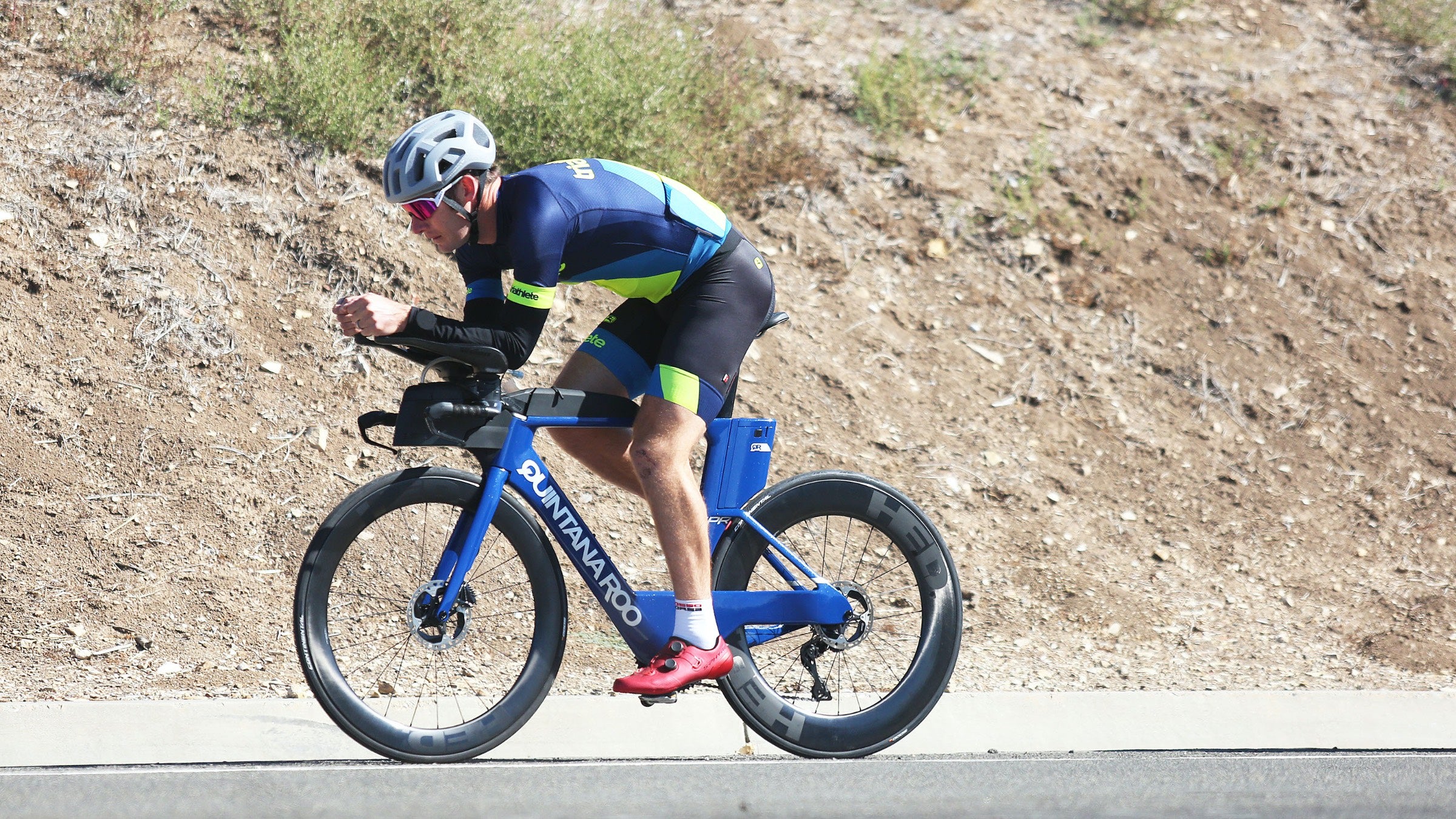
It’s been a weird year(s) for, well, everything; but it’s also been a weird year for new tri bikes. Typically major new tri bikes are announced around Kona, and with no Kona, some brands have pushed back their announcements (Trek, I’m looking at you), while others, like Quintana Roo, finally bit the bullet and released the bike they had hoped to have flying around the Queen K in October. (Scott is another example of simply biting the bullet, when they announced their excellent Plasma 6 late last year—likely amid a 2020 Kona misfire.)
The good news is that despite these delays, the few new bikes we’ve seen—or at least have gotten spy shots of—are fairly interesting for a few reasons. Some, like the Scott Plasma 6 or the unreleased Felt superbike are pretty big redesigns; some, like the Quintana Roo V-PR, are more like revisions or remixes.
In this extended review of Quintana Roo’s V-PR, we’ll break down the build, the ride, the fit, and a few other little bits that make this bike worth looking into. We’ll also give a pretty thorough analysis of why this is a great bike for triathletes (even if there are sexier bikes out there). If you’re looking for the basic “good,” “bad,” and quick takeaways, please take a look at our free review of the V-PR, but if you want to know what many miles on the V-PR has yielded, read on.
Quintana Roo V-PR: The Features Rundown
At the bottom of this review, you’ll find the exact spec on the range of V-PR complete bikes, but below we’ll take a look at the most relevant features, from most important to least.
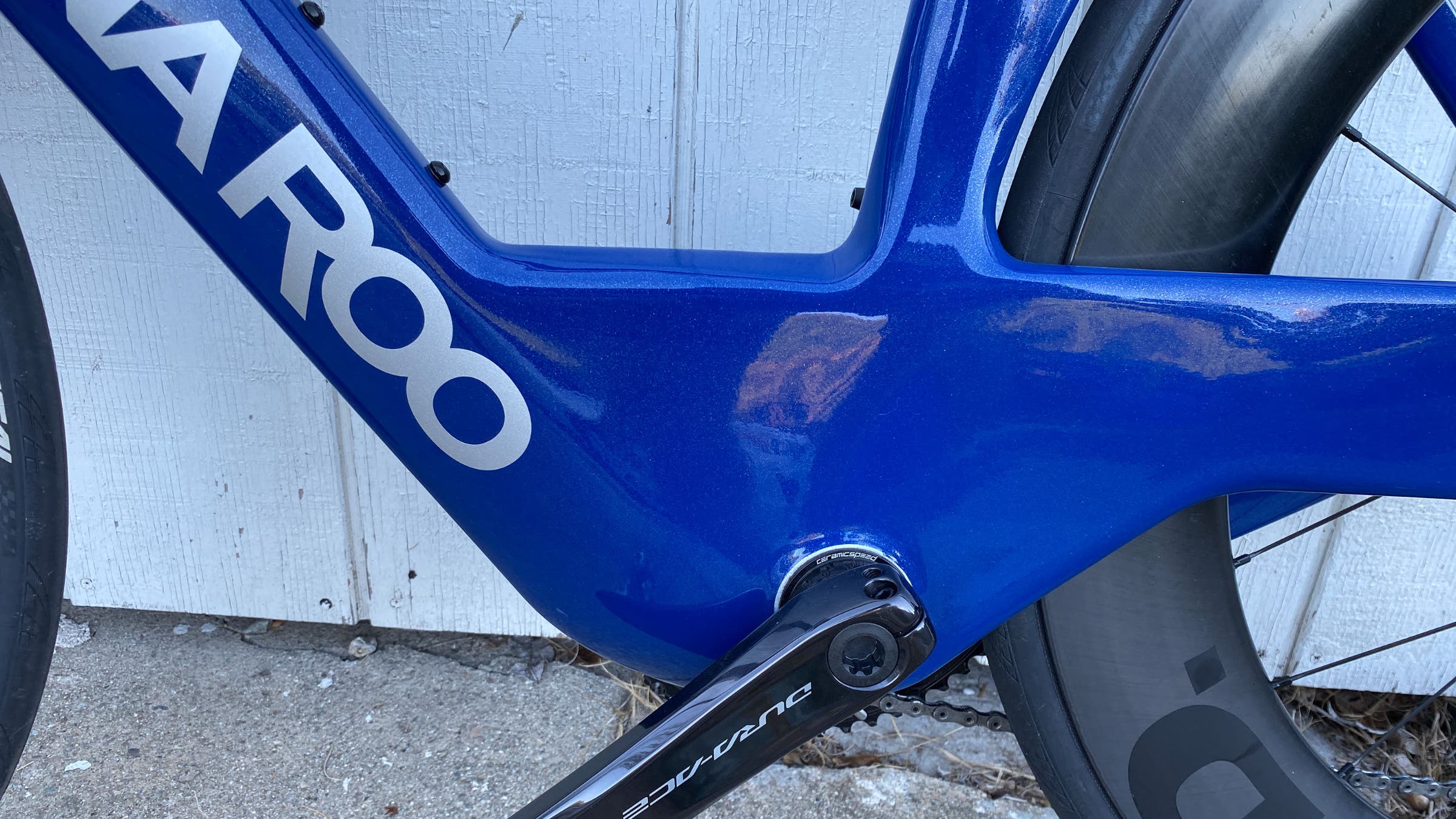
- Here, we’ve shown a picture of the bottom bracket junction—one of the most notably different features (visually) on the V-PR frameset. This is important because the engineers say it’s a big part of the V-PR’s 5% reduction in drag. It also follows the trend on bikes like the Plasma 6 and to a lesser extent the unreleased Trek Speed Concpt. It also seems to stiffen the BB and is likely the cause of the liveliness that we experienced when standing up on the pedals (more on that below).
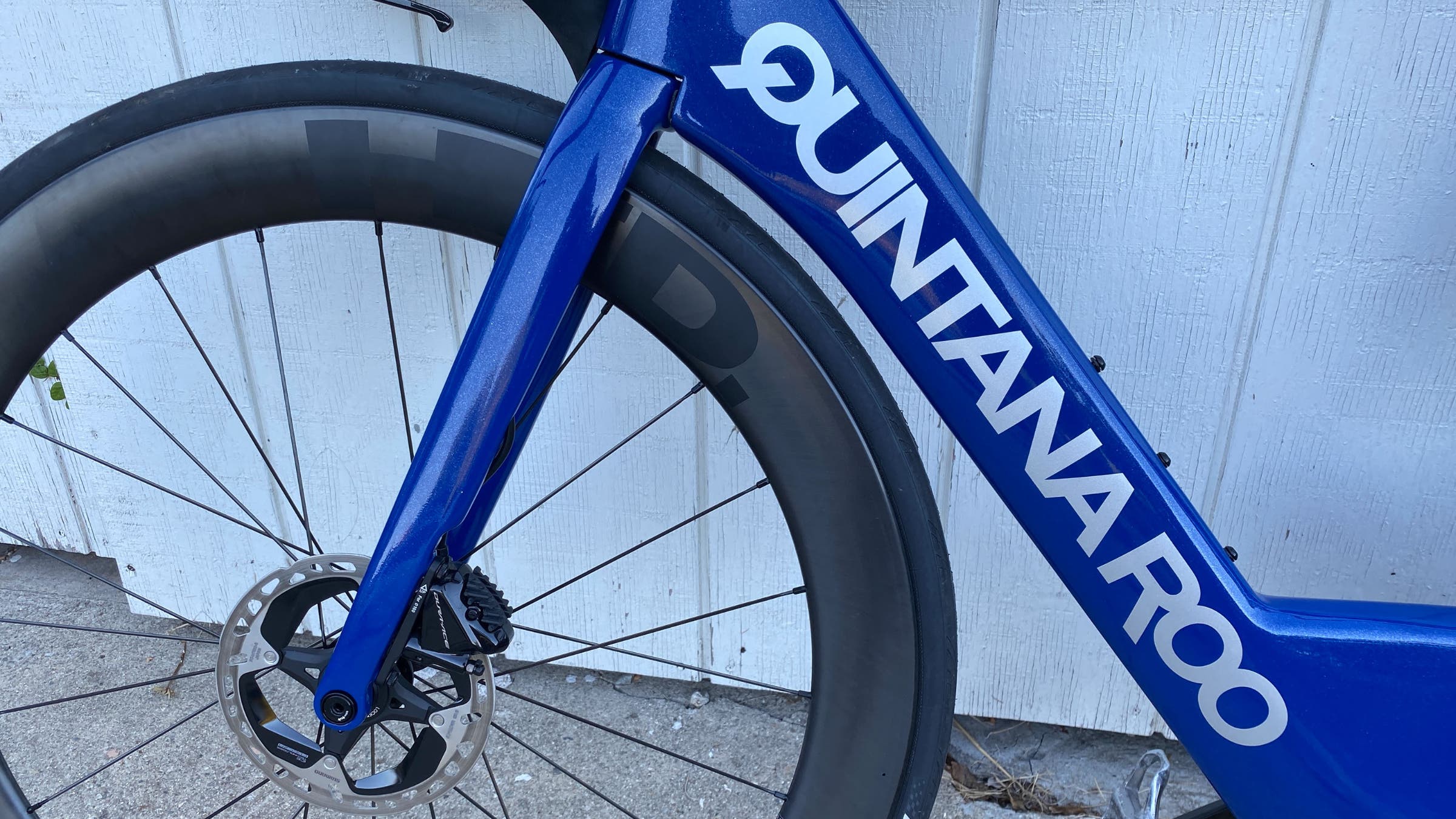
- Next up is the fork. The fork on the new V-PR is…well…old-school and plain-looking. Many bikes today are turning their forks into something that resembles a fairing—in many cases to shroud the disc brake caliper that sticks out like a sore thumb (and didn’t used to exist on tri bikes). Here, we see a thin-bladed fork and also the elimination of the hinge-style fork/headtube section that we saw on the PRsix2 Disc. The headtube and fork on this bike don’t have a lot going on, but it’s likely to save weight and reduce weird handling in crosswinds—which it does.
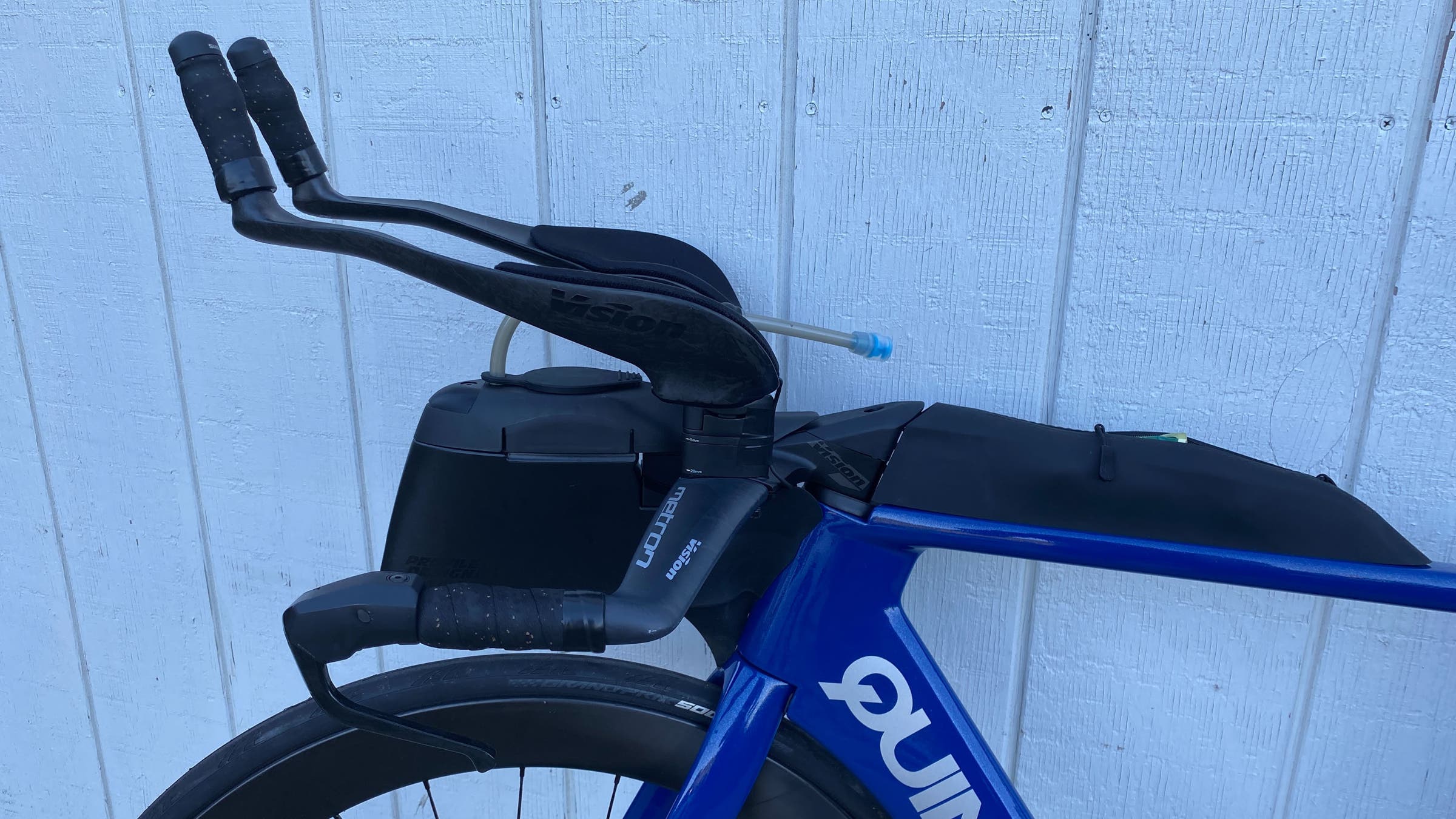
- The rest of the front end is a clever mixture of already-established components: The V-PR is available either with the Vision Pro front end (seen here), with it’s super aero, new style of non-adjustable extensions; or you can get it with the highly adjustable and more traditional TFR setup. We actually found the Pro setup fantastic, as it cupped our arms more than a standard setup and the wrist/extension angle was incredibly comfortable. This likely went a long way to how well the bike tracked while in the aero bars (more on that below).
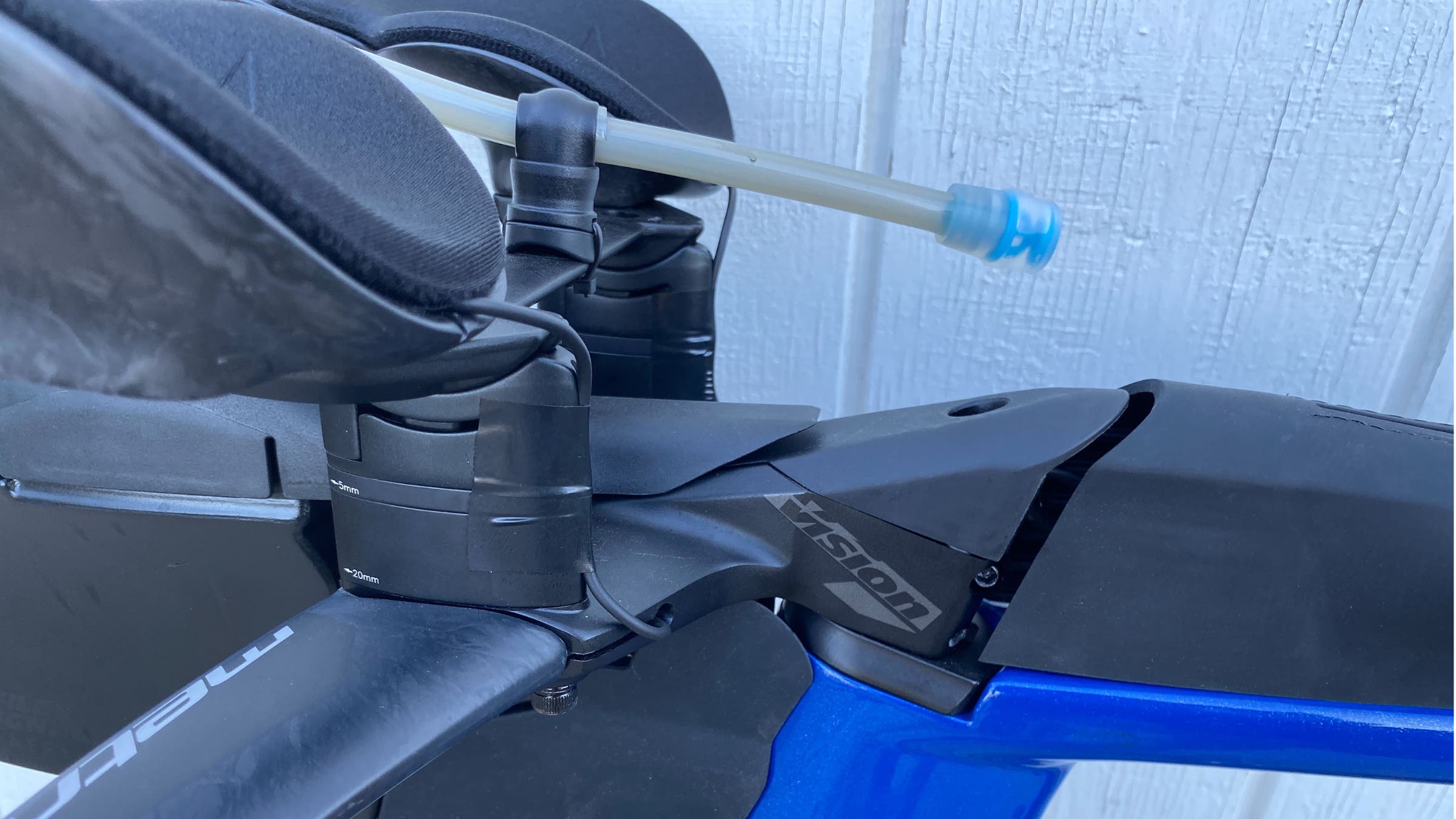
- The front end is also home to one of the best front hydration system setups we’ve used. QR worked with Profile to use their excellent Aeria reservoir that can be refilled with any type of bottle (it doesn’t have a baffle that requires a squirt bottle, like many front-end hydration systems today). The magnetic straw sits quietly on the Vision Pro’s crossbar, and the weight is positioned low enough that it doesn’t affect handling. (You can also swap out the Aeria for the HC800+ when purchasing.) Rather than trying to reinvent the wheel by making its own hydration system, QR is admirably recognizing its own limitations and letting the pros handle it (with a little aero help from some custom bits to let air flow better from reservoir to headtube to frame). TL;DR: It works.

- Finally, we get a look at the incredibly beefy non-drive side chainstay. Not only is this another likely culprit for the excellent snappiness that the V-PR has, but it’s also a big aero benefit—according to Quintana Roo. That big, fat chainstay on the non-drive side is where the majority of the oncoming air is rerouted by an asymmetrical downtube/bottom bracket area. The theory is that the air is cleaner on the side without the chainring, chain, derailleur, and cassette. As you can see, the disc brake caliper is heavily shrouded—in sharp contrast to the disc caliper up front on the fork.
The Fit
Fit-wise Quintana Roo continues to do a very impressive job without making any major changes to the geometry chart. The V-PR comes in six sizes—which, it’s worth noting, is more than most other tri brands. Particularly on the smaller end, there are a wide selection of options, which means a rider could easily fit one of two (or even three) sizes. This is excellent because it allows better handling at each size with less reliance on extreme fit adjustments like super high aerobar stacks, long stems, or weird giraffe-neck monopost front ends (I won’t name names). On that same note, the steerer tube is (thankfully) a standard 1 1/8”, so you can technically use whatever stem/aerobar combo you’d like without any weird assemblies or proprietary setups. In terms of the larger side of the spectrum, the biggest V-PR may leave a little bit lacking for taller riders looking for a long reach, as the 58.5 size only has a 44.7cm reach.
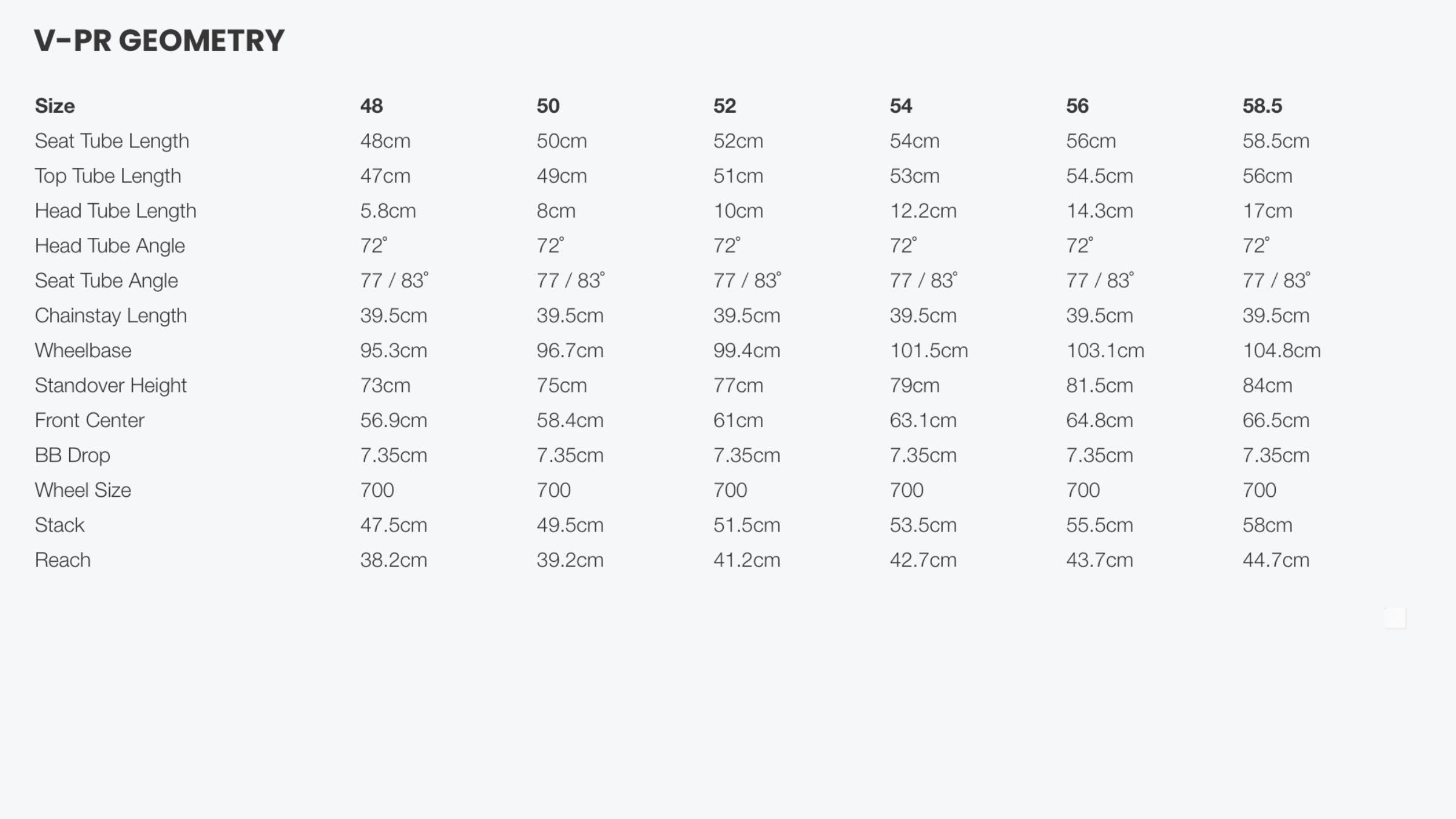
It is worth noting that QR’s commitment to a six size run bike is literally a sacrifice that can be measured in dollars, as lately many brands (Orbea, I’m looking at you) are trying to skirt the need to create multiple molds by offering far fewer sized frames and instead providing more modular front ends to accommodate fits at the extreme end of each size’s limits. A side effect of this limited sizing/modular fit setup can oftentimes be very unusual/unpredictable handling at the extremes. Hats off to Quintana Roo for not cutting corners here, while still leaving plenty of room for front-end adjustment via a wide variety of third-party options.
The Ride
Lately, a lot has been made of tri superbikes’ ride quality. In some ways, it’s the final frontier for designs that are quickly approaching the most minimal of marginal gains. There is only so much weight you can shave off a bike and only so much aerodynamically you can do before the bike gets unrideable or incompatible with the components that actually make it go. The good news for triathletes is that this final frontier means a renaissance on ride quality that has tri superbikes riding smoother, more predictably, and are more fun to ride. With the V-PR, Quintana Roo ticks most of these boxes in ways they haven’t really done before.
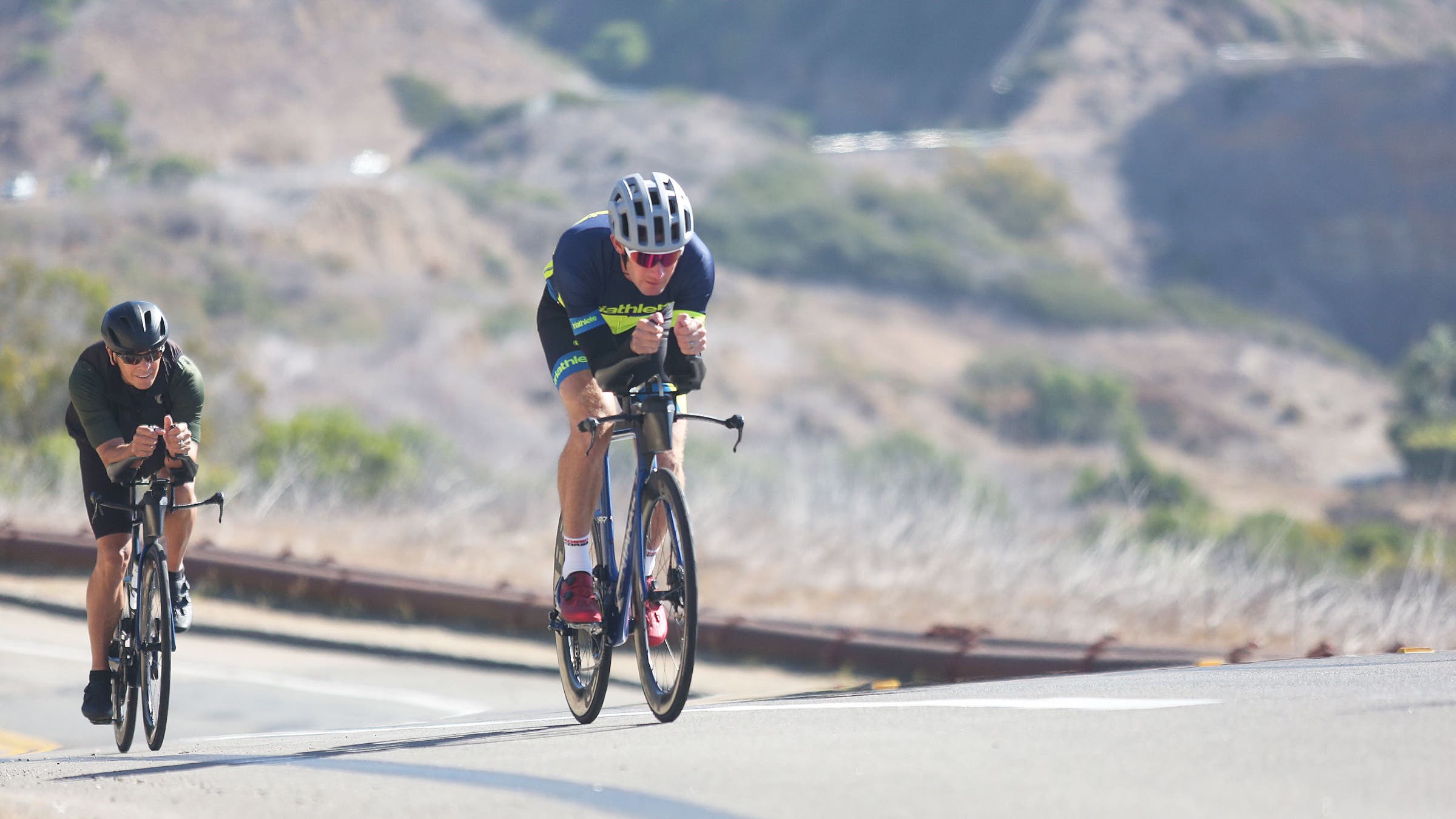
First, and most noticeably, the V-PR has a very mellow, smooth, and fatigue-resistant ride on the road. It eats up all types of road vibration from high-frequency chatter to big, bumpy hits. For triathletes, particularly long-course triathletes, this is essential. It doesn’t matter how fast you are, if you get off the bike and you’re beat up from a rough ride on sketchy pavement, your run won’t go well. The V-PR has somehow turned out one of the smoothest rides we’ve been on in years—outside of non-double-diamond bikes, of course. It ended up being smoother, head-to-head, than the Plasma 6 that rode very well for us earlier this year. Overall, this means a lighter grip on the aerobars, less impact on the elbows and rear, and greater relaxation through the legs, allowing you to simply pedal and not…clench.

Second, this is a bike that tracks incredibly well—particularly if you’re using the new Vision Pro front end, with its wide, cupping aerobar pads and comfortable wrist/extension angle. We were able to bomb down big, bumpy hills with pretty “puckery” crosswinds and thanks to the tracking, the ride quality, and (I’m guessing) the shallow front fork that doesn’t catch the wind, we were entirely comfortable—even early in our testing. So for most triathletes, I’d recommend going with that Pro front end, if it even remotely accommodates your fit (bearing in mind, the extension length/reach is not very adjustable), as it truly lets this bike shine.
Sadly, when it comes to descending, you’re not going to win any downhill contests against roadies. Like everything, there is a tradeoff, and like usual, that excellent straight-line tracking, predictable handling, and emphasis on comfort means the V-PR isn’t exactly a ginsu knife around corners. While it does act predictably, it is more of a “set-and-follow” geometry rather than something that lets you make real-time, quick adjustments while leaning into a corner. If that’s something that’s incredibly important to you (and honestly, as a triathlete, it shouldn’t really be), then you may want to look more at the Cervelo P5, or to a lesser extent the Plasma 6. Of course, that said, both of those bikes are not as effective on long fast straightaways, or bombing down big, windy hills in the aerobars.
Quintana Roo V-PR Extended Review: Conclusions
When it comes down to it, the V-PR’s major competition so far is two other recent bikes that we’ve mentioned extensively in this review—the Scott Plasma 6 and the Cervelo P5. All three bikes are in the $8-10k range, all three are very weight conscious, all three are very aero, and all three place a greater (and more tangible) emphasis on handling and ride. While the P5 may have the edge on both bikes when it comes to weight and handling, the V-PR rides smoother, tracks better, and accelerates better than you’d expect. The Plasma 6 falls somewhere in between. What it boils down to, then, is in the details.
Quintana Roo is making a big deal about the weight savings and the aerodynamic advantages of the V-PR over its previous models like the PRsix2 Disc. They’ve posted a chart that shows the V-PR blowing the doors off other superbikes when it comes to weight, but in truth we’re not talking about pounds of bike here—in a few cases, we’re talking about ounces. When compared to a slightly downspec’d Scott Plasma 6 (which I consider a worthy contender to this bike, alongside the new Cervelo P5), I found that when fully loaded, there was less than a pound of difference. That’s statistically almost nothing. As for the aerodynamics on this bike, Quintana Roo is claiming a roughly 5% reduction in drag from it’s previous PRsix2 Disc series. This is good, but probably won’t help you get to Kona.
No, the V-PR doesn’t have that ridiculously clean front end that both the P5 and—to a slightly lesser extent—the Plasma 6 have, but the trade-off is a front end that can be swapped out, travelled with, and won’t give you a headache when you work on it. Also, rather than relying on proprietary parts and very concrete build specs, Quintana Roo allows a higher level of customization in the purchasing process that is more likely to fit a wider range of people with a wider range of needs.
And this is where you’ll find the beauty of the lightly-remixed V-PR: It might not be as glitzy as its Cervelo or Scott counterparts, but it’s a workhorse that actually does what triathletes really need it to—ride fast in the aerobars for a long period of time without expending extra energy. Even though it’s not the tightest descender, it comfortably holds a line, longer than the old PRsix2 Disc, the Plasma 6, or the P5, and that should be enough for triathletes to take notice. The extras like swappable and serviceable parts, paint customization, and build-to-fit are all nice bonuses, but at the core, the V-PR is made for triathletes to get to T2 quickly and comfortably.
Specs:
Ultegra Di2 12-speed: $9,000
Dura-Ace Di2 12-speed: $10,400
